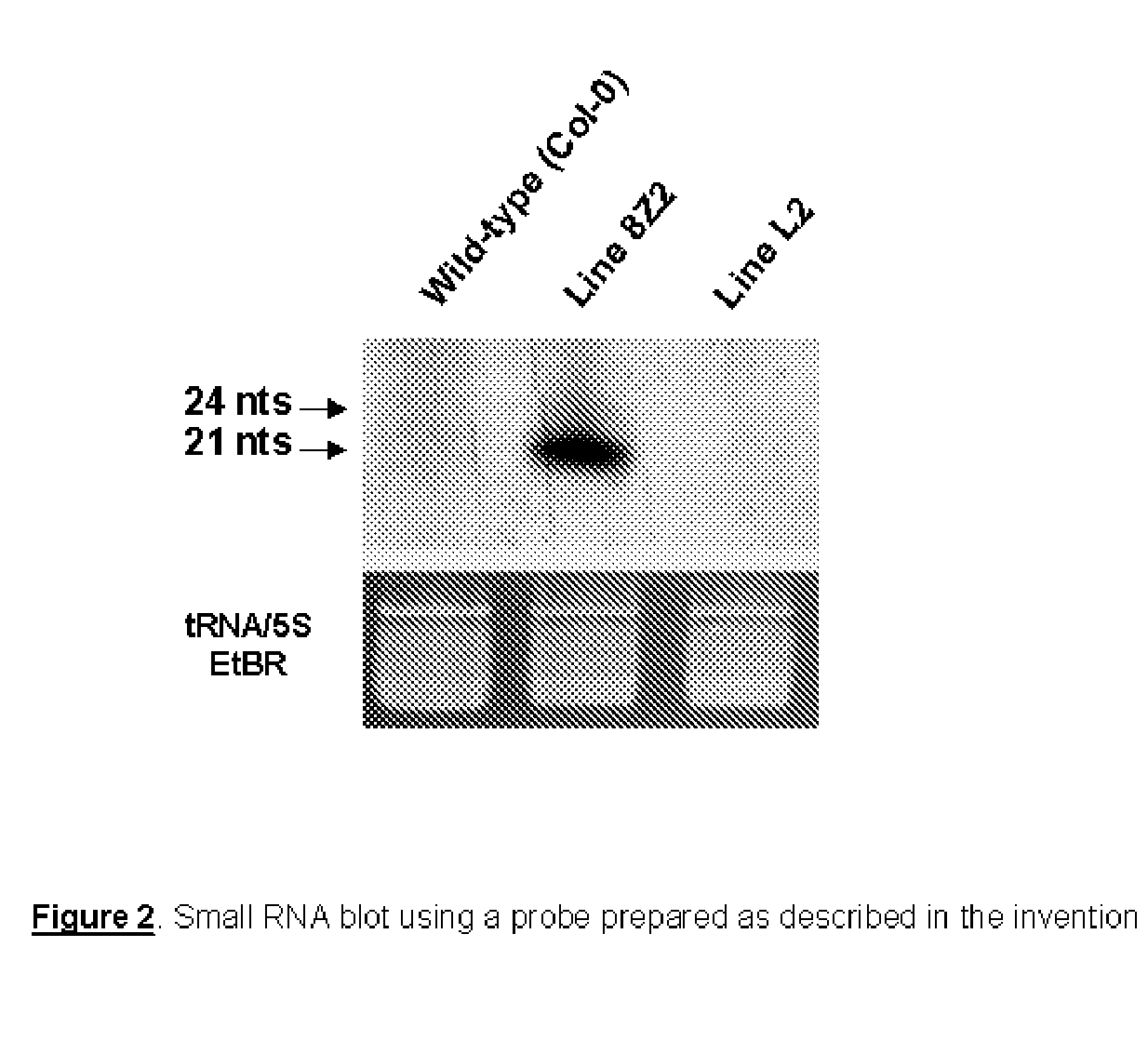RNA probes
a technology of rna probes and probes, which is applied in the field of rna probes, can solve the problems of difficult design of probes for the detection of such small rnas, no signal could be detected, and difficult to interpr
- Summary
- Abstract
- Description
- Claims
- Application Information
AI Technical Summary
Benefits of technology
Problems solved by technology
Method used
Image
Examples
Embodiment Construction
[0027] The present invention will now be described further in more detail and by way of example and with reference to the figures which show:
[0028]FIG. 1 shows a scheme in accordance with one embodiment of the present invention. In summary the scheme shows a method suitable for generating small unlabelled RNA fragments from a large unlabelled RNA fragment and subsequently labelling said small unlabelled RNA fragments. The steps which are carried out, are as follows: [0029] a) a gene / coding region of interest is first amplified using polymerase chain reaction (PCR) to generate an amplified DNA fragment; [0030] b) the amplified DNA is cloned into an appropriate cloning vector using techniques well known in the art for cloning PCR products (see for example Sambrook et al, 2000). For example, TA cloning vectors as known in the art, may be employed; [0031] c) once cloned, the DNA fragment is transcribed using appropriate RNA polymerases and their promoters flanking the multiple cloning ...
PUM
| Property | Measurement | Unit |
|---|---|---|
| chemiluminescent- | aaaaa | aaaaa |
| fluorescent | aaaaa | aaaaa |
| length | aaaaa | aaaaa |
Abstract
Description
Claims
Application Information
 Login to View More
Login to View More - R&D
- Intellectual Property
- Life Sciences
- Materials
- Tech Scout
- Unparalleled Data Quality
- Higher Quality Content
- 60% Fewer Hallucinations
Browse by: Latest US Patents, China's latest patents, Technical Efficacy Thesaurus, Application Domain, Technology Topic, Popular Technical Reports.
© 2025 PatSnap. All rights reserved.Legal|Privacy policy|Modern Slavery Act Transparency Statement|Sitemap|About US| Contact US: help@patsnap.com


